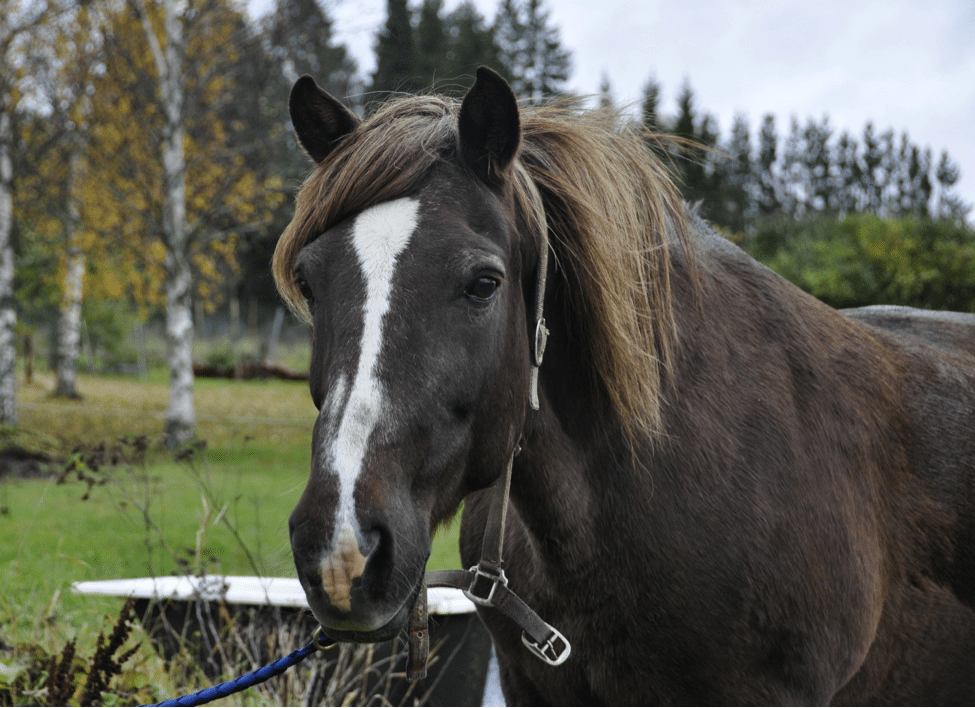Long before they were domesticated, horses survived on grazing alone. Today, foraging remains an important part of a healthy equine’s diet, but lurking inside every green, sunny pasture is the potential for danger.
Knowing what plants to weed out and which signs of trouble to watch for, could save your horse’s life. Start with these common poisonous plants and symptoms.
Bracken fern
Image Courtesy of: @returntonature Instagram
Also referred to as brake fern or eagle fern, this shrub looks innocent enough, but is known to disrupt your horse’s ability to process a critical B1 vitamin known as thiamin. Without the essential nutrient, nerve functioning quickly diminishes. Over time, the plant can lead to severe neurological impairment. Horses must consume huge amounts to reach dangerous toxicity levels; however, because horses are known to develop cravings for the fern, it may choose this forge above all others.
Where to find it: any undeveloped lands and roadside paths all over the US.
Plant specific symptoms: look for nerve damage that can manifest as lack of coordination, blindness or neural disruptions like depression.
Wild Carrot
Image Courtesy of: @joyfuls_Instagram
Daucus Carota, goes by many names including bird’s nest, bishop’s lace and Queen Anne’s lace. No matter which nomenclature you use, the cyanide compounds and neurotoxins contained therein are highly poisonous to horses. As the neurotoxins suggest, nerve function is the main cause for concern and is especially problematic when the plant cells are damaged. The plant is most toxic during spring when its flowers are in bloom.
Where to find it: along roads and highways, unkempt pastures across the US and waste areas.
Plant specific symptoms: the sap from wild carrot can easily irritate the skin on both animals and humans.
Maple Trees
Image Courtesy of: @carlabray Instagram
Fresh leaves plucked from the tree aren’t generally much cause for concern. It’s the fallen, wilted ones that do the most damage. Whether they’re grounded because of a strong storm, fallen branch or autumn season, once digested, the deteriorated red maple leaves prevent oxygen from reaching vital organs. Silver and sugar maple leaves are also damaging, but it’s the red maple that’s so highly toxic. If your horse eats more than a pound or two, their red blood cells can be severely compromised.
Where to find it: northeastern half of the United States and Canada though individual trees have been planted in neighborhoods all over due to their decorative features.
Plant specific symptoms: if you see signs of appetite loss, dehydration, dark colored urine, yellowing in the gums, or increased respiratory and heart rate, your horse needs an emergency IV ASAP.
Milkweed
Image Courtesy of: @thefeltedcatpads Instagram
Milkweed belongs to a toxin family known as cardenolides. These cardiac glycosides target the cardiovascular system, and even relatively small amounts can be deadly. Fortunately, animals generally pass over this bitter plant. Still, if it’s the only forge available and they consume a mature labriform milkweed, it could quickly stop their heart.
Where to find it: grows readily along roadsides, ditches, embankments and overgrown pastures.
Plant specific symptoms: weakness, slow and shallow breaths, inability to stand, quickening pulse.
Water hemlock
Image Courtesy of: @benji927 Instagram
We’ve saved the most toxic for last. This common weed is chockfull of cicutoxin alkaloid, causing a chemical reaction in the central nervous system. All pieces and parts of the plant are dangerous, but the highest concentrations of toxins are located at the base and roots. Still, less than a pound of even leaves or stems can be poisonous regardless of whether they are dried, fresh or aged.
Where to find it: all over the country, congregating along water logged areas like springs and constantly wet ground.
Plant specific symptoms: brain function is usually the first place these toxins target. Watch for large amounts of saliva, dilated pupils, difficulty breathing, or seizures and convulsions. This one moves fast– poisoning typically occurs within an hour– if you suspect your horse has made contact with the plant, seek help immediately.
General Plant Poisoning Symptoms
Since horses carry so much weight, they are partially insulated from some otherwise toxic weeds, shrubs and grasses. Of course, the severity of the poisoning depends heavily on how much of the plant has been consumed.
Different strains disrupt different systems or organs and some more general symptoms to watch for include:
- Disorientation
- Excessive salivating
- Muscle Spasms and tremors
- Difficulty chewing or swallowing
- Colic
- Irregular breathing
- Rapid or decreased heart rate
- Colored or bloody urination
Keep in mind that plant poisonings can lead to fatal or otherwise catastrophic ends. If your horse shows any signs they may have ingested a toxic plant, seek help from an emergency equine vet before symptoms worsen.



